Pirelli chosen by VR46 Riders Academy as Partner for their Motorcycle Fleet
By Wayfarer |
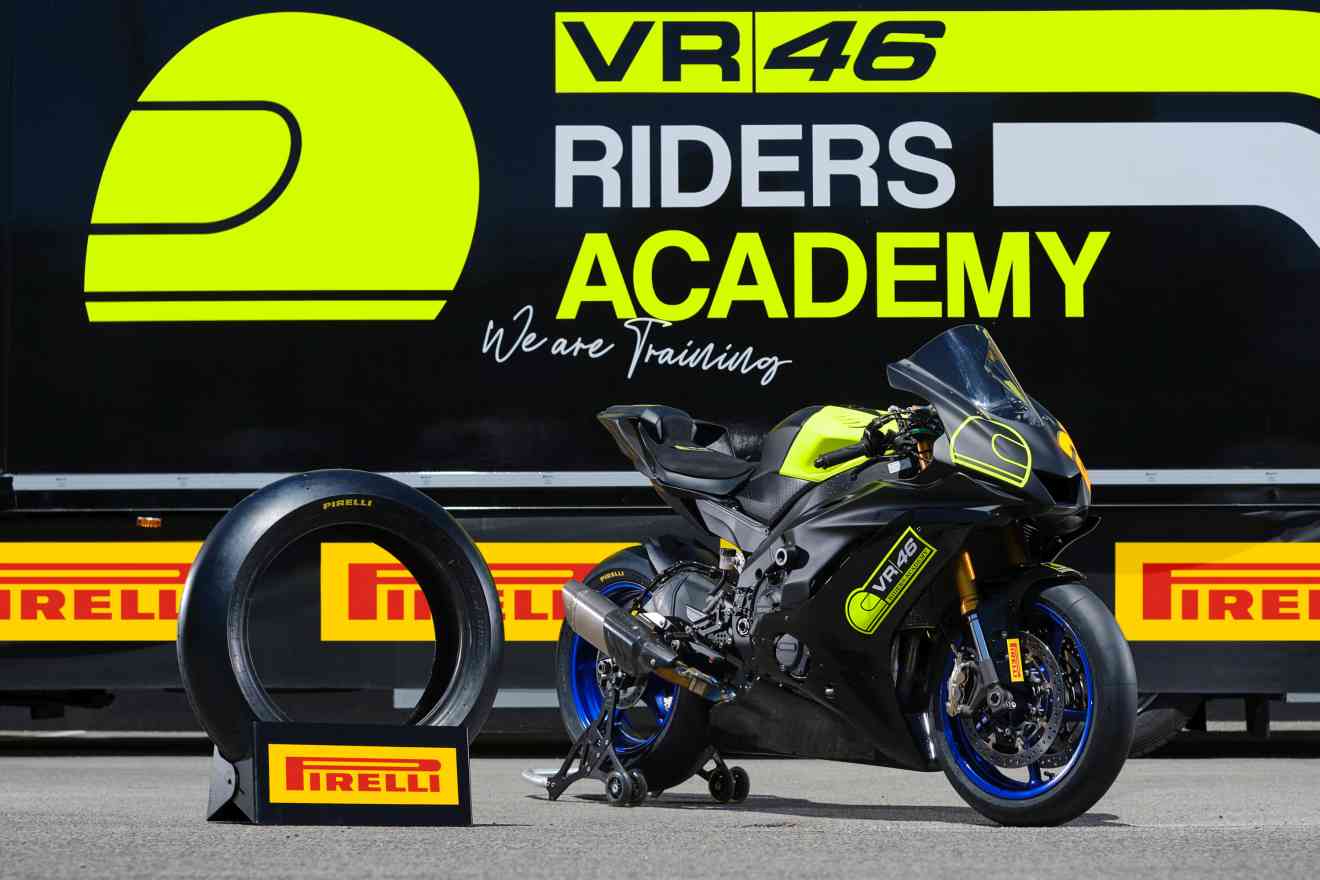 VR46 Riders Academy Chooses Pirelli as Partner for their Motorcycle and E-MTB Fleet.
Thanks to this collaboration with the VR46 Riders Academy, one of the most renowned schools in the world for professional racers, will equip its training fleet with Pirelli tires, from road bikes to motocross and E-MTB machines.
Milan, Italy September 14, 2021 – Pirelli has been chosen by the VR46 Riders Academy as technical partner and tire supplier for several of the team’s training activities. Thanks to this collaboration, the riders of the academy will be equipped with tires of the Italian manufacturer during their trainings on road bikes, motocross and E-MTBs.
The VR46 Riders Academy was founded with the aim of helping young Italian motorcyclists on their journey towards a racing career in the two-wheeled world. The staff that follows the riders of the VR46 Riders Academy are the same who support Valentino Rossi in the races so every advice and every decision is the result of years of experience.
The partnership involves the use of Pirelli tires for the training activities of the VR46 Riders Academy riders: from circuit sessions with road bikes, to off-road exercises using motocross bikes and training on E-MTBs.
The YZF-R1 and YZF-R6 motorcycles are used for training on circuit, which thanks to this partnership will be equipped with Pirelli DIABLO Superbike tires in the different compounds present in the range and in the same sizes used in the FIM Superbike World Championship. DIABLO Superbike is the tire used by all riders in the world championship of production-derived motorcycles and over the years it has undergone a constant improvement in performance thanks to the intense research and development carried out by Pirelli engineers.
For off-road training, the VR46 Riders Academy will rely on the performance of the SCORPION MX tire family, which boasts 74 world titles in motocross among its many successes, and the SCORPION E-MTB product range dedicated to electric mountain bikes.
Claudio Zanardo, Senior Vice President Pirelli Moto & Cycling, commented on the agreement: “I am pleased to announce the collaboration between VR46 Riders Academy and Pirelli, which has always supported and invested in the growth of young riders. The confirmation of Pirelli as tire supplier for the motorcycles and E-MTBs used in the training sessions of the VR46 Riders Academy further strengthens Pirelli’s position both in the sporting and in the marketing fields. This partnership is a clear recognition of the consolidated reputation enjoyed by Pirelli motorcycle tires, developed thanks to decades of participation in top international competitions, with the addition of our latest tires specially developed by the Cycling division for performing E-MTBs. We are pleased that the VR46 Riders Academy has chosen to rely on the performance and safety offered by Pirelli tires for its training activities.”
VR46 Riders Academy Chooses Pirelli as Partner for their Motorcycle and E-MTB Fleet.
Thanks to this collaboration with the VR46 Riders Academy, one of the most renowned schools in the world for professional racers, will equip its training fleet with Pirelli tires, from road bikes to motocross and E-MTB machines.
Milan, Italy September 14, 2021 – Pirelli has been chosen by the VR46 Riders Academy as technical partner and tire supplier for several of the team’s training activities. Thanks to this collaboration, the riders of the academy will be equipped with tires of the Italian manufacturer during their trainings on road bikes, motocross and E-MTBs.
The VR46 Riders Academy was founded with the aim of helping young Italian motorcyclists on their journey towards a racing career in the two-wheeled world. The staff that follows the riders of the VR46 Riders Academy are the same who support Valentino Rossi in the races so every advice and every decision is the result of years of experience.
The partnership involves the use of Pirelli tires for the training activities of the VR46 Riders Academy riders: from circuit sessions with road bikes, to off-road exercises using motocross bikes and training on E-MTBs.
The YZF-R1 and YZF-R6 motorcycles are used for training on circuit, which thanks to this partnership will be equipped with Pirelli DIABLO Superbike tires in the different compounds present in the range and in the same sizes used in the FIM Superbike World Championship. DIABLO Superbike is the tire used by all riders in the world championship of production-derived motorcycles and over the years it has undergone a constant improvement in performance thanks to the intense research and development carried out by Pirelli engineers.
For off-road training, the VR46 Riders Academy will rely on the performance of the SCORPION MX tire family, which boasts 74 world titles in motocross among its many successes, and the SCORPION E-MTB product range dedicated to electric mountain bikes.
Claudio Zanardo, Senior Vice President Pirelli Moto & Cycling, commented on the agreement: “I am pleased to announce the collaboration between VR46 Riders Academy and Pirelli, which has always supported and invested in the growth of young riders. The confirmation of Pirelli as tire supplier for the motorcycles and E-MTBs used in the training sessions of the VR46 Riders Academy further strengthens Pirelli’s position both in the sporting and in the marketing fields. This partnership is a clear recognition of the consolidated reputation enjoyed by Pirelli motorcycle tires, developed thanks to decades of participation in top international competitions, with the addition of our latest tires specially developed by the Cycling division for performing E-MTBs. We are pleased that the VR46 Riders Academy has chosen to rely on the performance and safety offered by Pirelli tires for its training activities.”Harley-Davidson XL Sportster 1957
By Bandit |

In 1957, the USSR launched both the first intercontinental ballistic missile and the first artificial satellite, Sputnik 1. These actions would ultimately lead to the Space Race, but meanwhile on Earth, that same year, America’s Harley-Davidson released its own history-making machine into the world. It was a new lightweight overhead valve (OHV) twin motorcycle that allowed the U.S. to compete with its British competition, and in doing so birthed one of the longest running models in motorcycle history: The XL Sportster.

The K Model was the birth of Harley-Davidson’s lightweight twins, and the KR (racing) model would dominate the AMA races from the mid 1950s through to the 1960s. But by the late 1950s Harley Davidson had spent four years trying to get more power out of the side-valve for the touring customer, and their last attempt was increasing the capacity in the KH model to 883 cc, but this strategy proved counter-productive due to the increase in weight. Instead, Harley-Davidson went on to develop an OHV version of the K Model engine, which became the XL commonly known as the Sportster.
Retaining the same bottom end as the K Model, the XL used the same four-cam configuration to drive the overhead valves—often considered the best valvetrain Harley has ever made. Harley had used aluminum in the heads of its Panhead engines, but customer experience indicated that these engines weren’t yet reliable enough, so Harley opted for cast iron heads on the XL, which weighed in at 495 pounds. The OHV did increase in power, to 40 horses, and in tandem with the four-speed transmission the XL proved itself a real contender within the American motorcycling community. It even built a reputation as an American “sports bike”; the combination of American-made V-twin power and lighter weight meant that the XL was ridable by all.



Harley-Davidson XR338 Street Tracker Concept Based On Benelli 300cc
By Bandit |
![]()
With global sales getting affected due to pandemic and closure of business operations in emerging markets such as India, the American manufacturer has not had a pleasant 2020. However, the brand has a very rich legacy over many years and it is confident about its resurgence in future. A couple of months ago the 338R from Harley was the talk of the town as several spied images and patent sketches had leaked on the internet giving us an idea of what the company’s future could look like. Termed as the ‘baby Harley’, this bike looked nothing like a typical Harley-Davidson.
![]()
Atypical because neither does the bike belong to a cruiser segment nor does it feature a big displacement powertrain. The motorcycle adopts a flat-track racer body style. Even though flat trackers aren’t quite the big thing these days, an Italian industrial design house has seen potential in this segment and therefore created its own concept prototype. Just like teased patent images of 338R, the XR338 too is based on Benelli 302S. Brief about Engines Engineering Founded by Alberto Strazzari in 1979, Engines Engineering (EE) specializes in motorcycle design and development and have worked previously with OEMs like Yamaha, Ducati, Honda, Benelli, Suzuki and many more.
![]()
It has also provided its services for designing purposes for local Italian manufacturers. However, this is the first time it has attempted something like this on an existing model and turned it into something completely different. Design of XR338 Dubbed as XR338, this naked street tracker is aimed primarily at the younger consumers of the US market. Design-wise, EE has admitted that the XR338 draws major inspirations from Harley-Davidson XR750. The iconic flat tracker is celebrating its 50th Anniversary this year. EE claims that the prototype is fully functional and 70 percent ready for production.
Although most of Benelli’s components are intact, it gets its own modified frame with the stock 302S trellis structure making way for a more flowing affair. EE has also added its own body, fuel system, LED lighting, instrumentation and a new pair of 18-inch custom wheels. Suspension has also been tweaked slightly in accordance with the new wheels and bike’s revised mass. It also receives a new exhaust muffler and ECU unit. EE has designed the XR338 keeping in mind the latest emission norms including Euro 5 standards, US DOT, and even CARB requirements thus removing most hurdles before production. EE claims to have built this prototype in 120 days and it would take another six months to complete the last 30 percent remaining for it to be production ready.
![]()
Powertrain Utilized Benelli 302S is powered by a 300 cc twin-cylinder which pushes out 37.5 bhp and 25.6 Nm of peak torque. Even though XR338 will share its underpinnings with Qianjiang QJ350 and Benelli 302S, it is said to carry its own American heart and soul. Speculations are rife that the 338R will be powered by a 338cc parallel-twin engine which will produce 43 bhp. It is expected to be paired with a 6-speed transmission unit. Whether the XR338 draws some inspiration for folks at Harley-Davidson is yet to be seen but its design is definitely a head-turner. Also, the future of 338R in India hangs in balance since Harley Davidson relinquishing its duties in the country and handing it over to Hero MotoCorp.
Article courtesy of Rush Lane:
Photos courtesy of:

Crushing the Record for the World’s Longest Motorcycle the American Way
By Wayfarer |
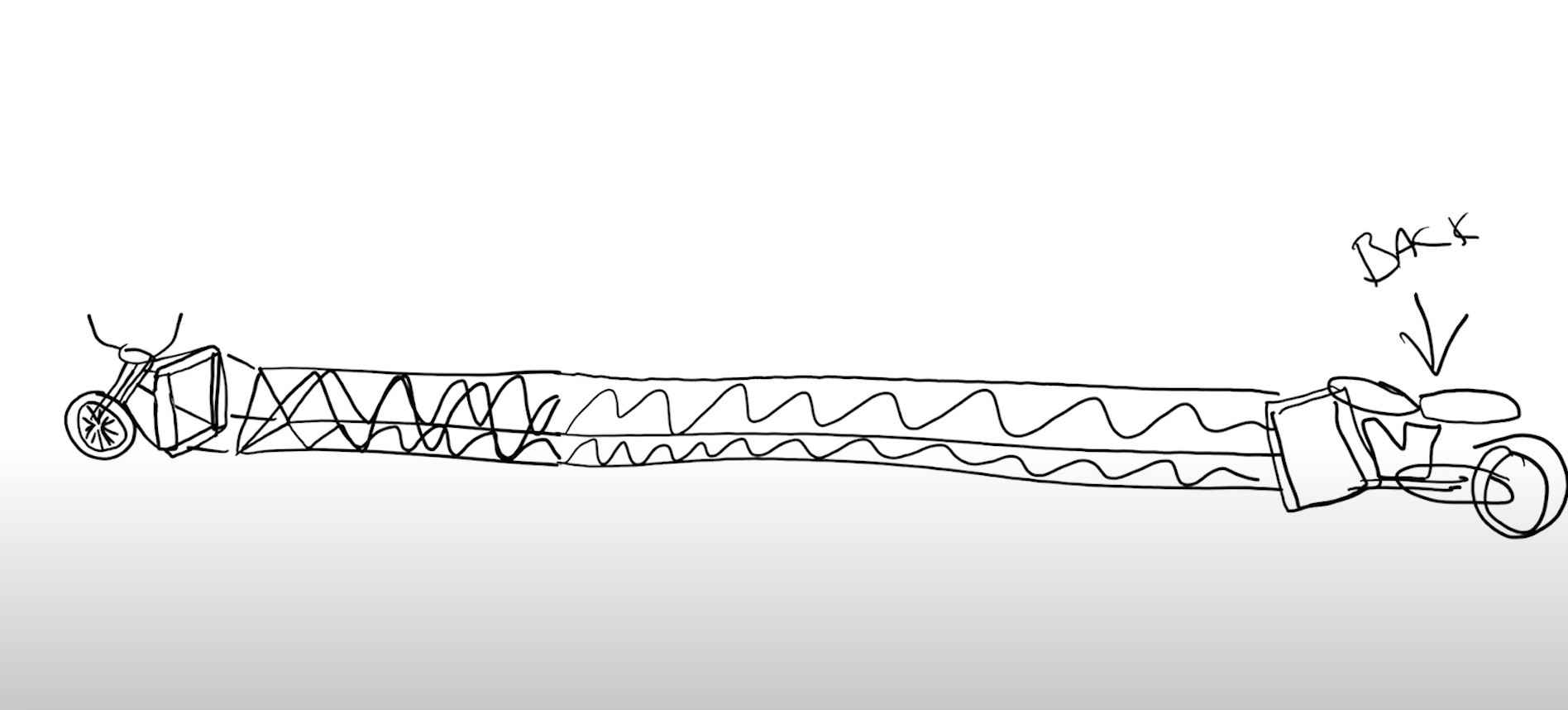
by Cristina Mircea from https://www.autoevolution.com
The title for the longest motorcycle in the world belongs to an Indian who built one that measures 86 ft and 3 in (26.29m). Bharat Sinh Parmar holds the Guinness World Record since 2014. That didn’t sit well with the guys from Bikes and Beards, who decided to bring that record to the United States, using a vintage Japanese bike.
For those of you who are unfamiliar with it, Bikes and Beards is the YouTube channel of SRK Cycles, a bike dealer based in Pennsylvania. This isn’t their first unusual vlog, as the whole purpose of the channel is to redefine the way you use a motorcycle and push the boundaries of human creativity. In case you haven’t slept well at night wondering if you can run a motorcycle underwater for 10 minutes, do browse their channel and you’ll find out.
The common approach for others who’ve tried to build a long motorcycle has been to place the engine and the drive train on the front, then add a long swingarm and then the wheel in the back. But there’s a simpler way to do things, which is to build two square tubes at both ends of the bike and have them welded on the motorcycle. The long frame would then get connected to those tubes.
The guys’ bike, a 1980 Honda CB750 Custom motorcycle, ended up measuring 108 ft, which was a success, not to mention the fact that everything was accomplished within one week.
In order to break the record, the motorcycle had to prove it can actually handle itself on the road, taking turns and everything. Bharat Sinh Parmar had to ride his for 308 ft (93.8 m) without putting his feet down, to break the previous record. But the Bikes and Beards guys took their stretched bike for a 1,058 ft (322 m) ride, crushing the Indian’s record.
Have A Look At The VideoBlog:
AFT Springfield Mile Racing Action
By Wayfarer |
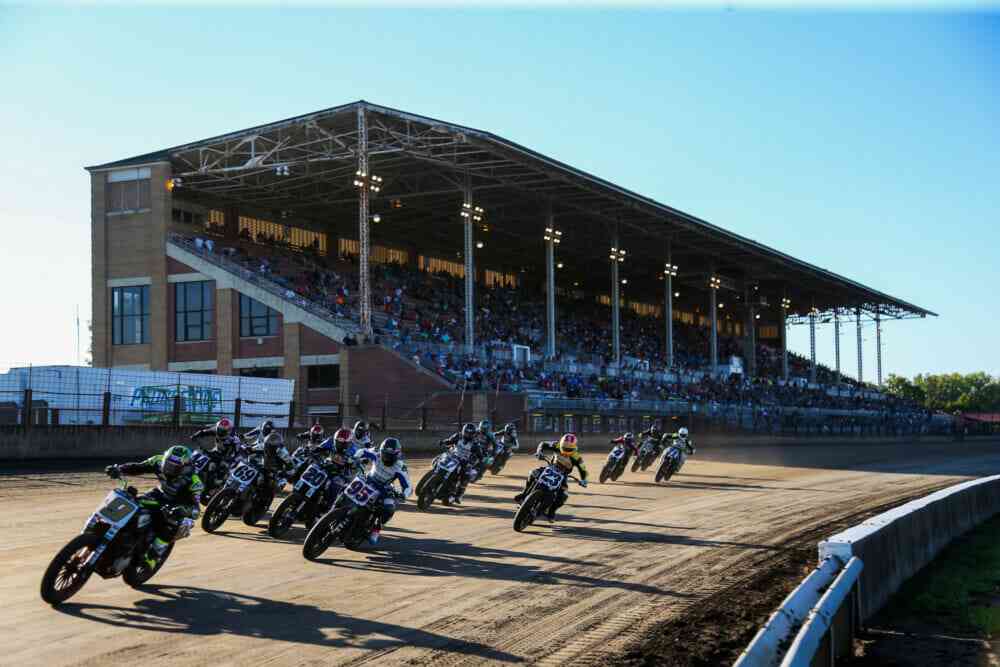
by Elliot Doering
Sept. 5th and 6th, 2021
Springfield, Illinois
American Flat Track Series
One of the all-time great mile track legends – #9 – Jared Mees (#9 Indian Motorcycles Indian FTR-750) dominated the “Labor Day Weekend” Springfield Mile 1 before a packed house at the Illinois State Fairgrounds, home of “ The World’s Fastest Mile.”
Mees would hold onto the victory by just 0.116 seconds against defending American Flat track series champion #1, Briar Bauman who finished 2nd.
Click Here to Read the Race Report on Bikernet.com
Join the Cantina for more – Subscribe Today.
https://www.bikernet.com/pages/custom/subscription.aspx
Indian Wrecking Crew Battle for Championship
By Wayfarer |
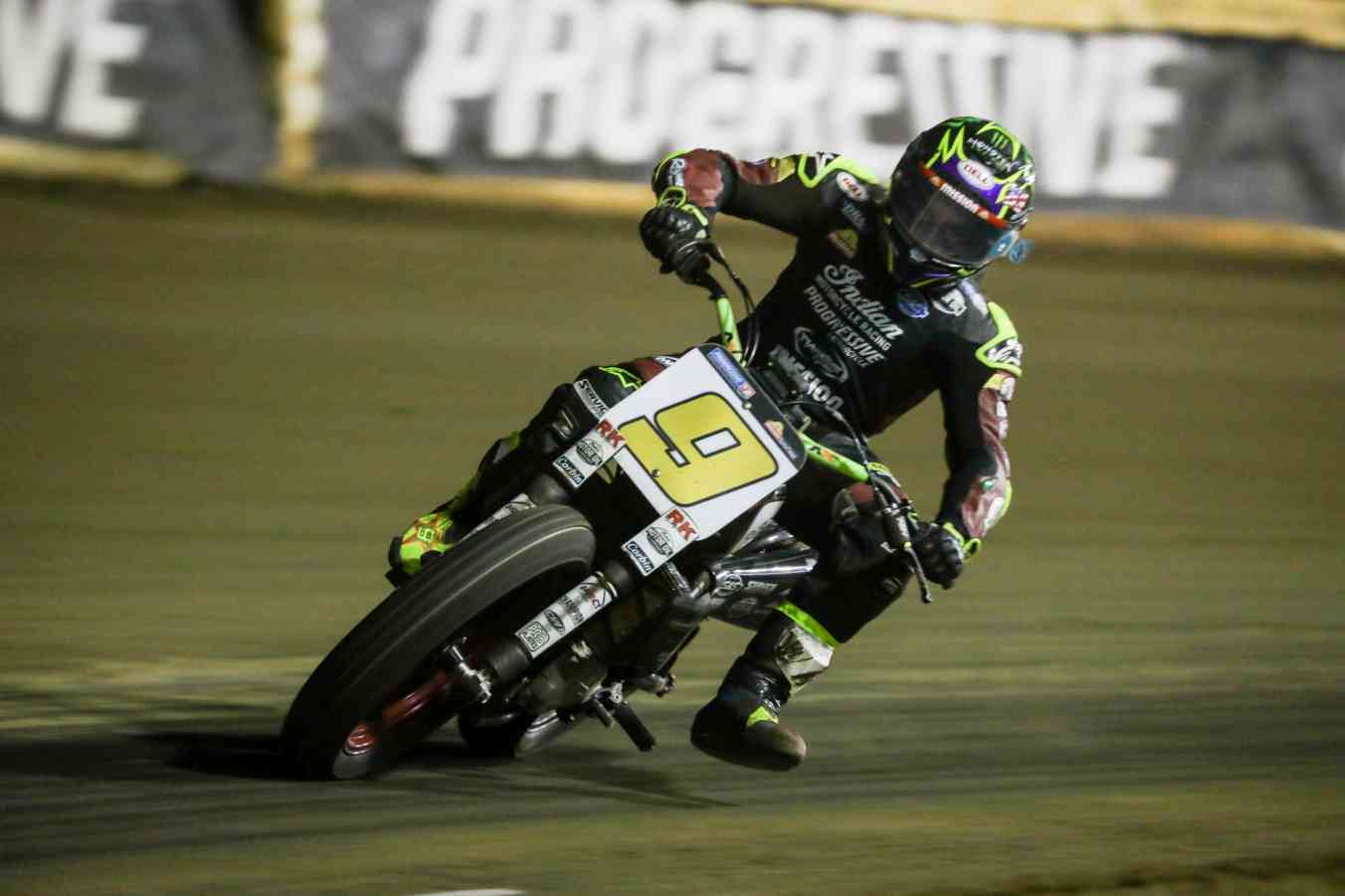
Indian Motorcycle Wrecking Crew Rider Jared Mees Claims Lead Following Sacramento Mile Doubleheader
With One Race Remaining, Indian Motorcycle Racing Two-Man Factory Team Set to Battle for 2021 SuperTwins Grand National Championship
SACRAMENTO, CALIF. (September 13, 2021) – Indian Motorcycle Racing, presented by Progressive Motorcycle Insurance, and its two-man factory race team are set to battle it out for the brand’s fifth consecutive rider championship. Jared Mees, winner of the last four races, took control and secured the top spot on the SuperTwins leaderboard with just one race remaining. Wrecking Crew teammate and reigning two-time SuperTwins champion, Briar Bauman, finished the weekend with back-to-back third-place finishes.
On Saturday, Mees wasted no time getting out ahead of the Main early and fast. He came into the weekend with first place in mind, as he makes a late-season push to claim his seventh-career Grand National Championship. The race quickly became a competition for the other two podium positions, as Mees distanced himself with a comfortable lead that allowed him to cruise past the finish line while celebrating with both hands in the air. Six riders joined the battle for second and third, which led to last-lap heroics by Indian Motorcycle privateer Jarod Vanderkooi, as he secured his fourth second-place finish of the season.
During Sunday’s Main, Mees took control after a few laps and began to distance himself. Bauman again caught himself in a battle for second – exchanging passes with Indian Motorcycle privateer Sammy Halbert. Both Bauman and Halbert were followed closely by Vanderkooi and fellow Indian Motorcycle privateer Bryan Smith, who recently made his retirement announcement and was riding Mees’ back-up bike. Just as Mees finished with ease, the pack battling for second saw Smith make an incredible two-rider pass and finish his legendary 20-year career with a second-place finish.
“What an amazing weekend in Sacramento. Not only do we have our two star riders set to go head-to-head for the 2021 championship, but fans got to witness Bryan Smith finish his illustrious career with a second-place, podium finish and take one last victory lap with his good friend and long-time rival, Jared Mees,” said Gary Gray, Vice President of Racing, Service & Technology. “This is what racing is all about, and exactly the type of finale the fans want to see, as Briar strives for his third-consecutive championship and Jared his seventh.”
With 60 career wins, six championships, and multiple records, Mees has been vocal about his career goal to reach Scottie Parker’s record of nine championships. Leading Bauman by four points, Mees has finished strong, winning five of the last six races, and put himself in a position to recapture the No. 1 plate.
The 2021 AFT season will conclude with the Charlotte Half-Mile on Friday, October 8, at Charlotte Motor Speedway. For more information on Indian Motorcycle Racing, visit IndianMotorcycle.com and follow along on Facebook, Twitter and Instagram.
SPRINGFIELD MILE 2021
By Bandit |

Sept. 5th, 2021
Springfield, Illinois
American Flat Track Series
“Springfield Mile 1”
One of the all-time great mile track legends – #9 – Jared Mees (#9 Indian Motorcycles Indian FTR-750) dominated the “Labor Day Weekend” Springfield Mile 1 before a packed house at the Illinois State Fairgrounds, home of “ The World’s Fastest Mile.”

Mees really had his Indian flying, and was never really challenged, to add to his career Mile wins. The race consisted of a 14-minute plus 2 laps Main Event thriller, which saw up to 8 riders in the lead group all battling at a frantic pace at 145 mph, until a pack made up of Mees, defending AFT Champ – Briar Bauman, Brandon Robinson, Sammy Halbert, and Jarod Vanderkooi, all Indian mounted, made up the bulk of the race.
As is often the case at Springfield, a last lap shootout resulted between Mees and Bauman, but that only happened once the race slipped under the 3 minute mark. Unfortunately, Vanderkooi was the first to leave the race with a mechanical issue, while Halbert would follow for the same reason, with less than a minute on the clock.
Robinson would fall off the pace of the lead pack on the final lap, resulting in just Bauman and Mees to determine the winner.

The pair fought tooth and nail, swapping the lead back and forth throughout much of the battle, and Bauman would execute a stellar high and low line late that gave him the potential path to glory. He tried to duplicate it in turns 3 and 4 on the last lap, but came up just inches short of passing Mees, as the pair flashed toward the checkers.
Mees would hold onto the victory by just 0.116 seconds, with Robinson gaining a fine podium result for third.
As said, Mees’s win was his 6th victory at Springfield, which includes 4 of the last 5 races there.

Frustration showed on Bauman’s face, and he made it clear in Victory Circle that Mees’s blocking tactics often crossed the line. He stated he’s, “not get mad, get even,” for the second Mile rematch, on Monday.

Robert Price, a team mate to both Robinson and Vanderkooi, on the Mission Indian team, finished a strong 4th, with a very impressive Kolby Carlile, riding the Estenson Yamaha MT-07, collecting his 3rd career top class fifth place result.
Those who did not finish the race included Jeff Carver, and Bryan Smith – both early retirements.
Sept. 6th, 2021
Springfield, Illinois
American Flat Track Series
“Springfield Mile 2”
Again, Jared Mees, riding the factory-backed Indian Motorcycles Indian FTR-750, wreaked havoc on a strong field of riders to complete the Labor Day Weekend Springfield Mile 2.
As mentioned earlier, Mees was accused of blocking down the lines of his challengers during Sunday’s Mile race. Mees said any such allegations were irrelevant on Monday. His Indian responded to an early, all-out lead, and then Mees just rode away from a 5-rider pack of desperate challengers, commanding an 8 second advantage with just 2 minutes left on the clock.

But, with a red flag issue, the dominant Mees was forced to prove his mastery of the Springfield track another time.
A hot–riding Sammy Halbert would slide in front of Mees for a few seconds, while Mees regained the front running position, resulting in a 1.134 second victory margin.
2020 Springfield Mile winner – Sammy Halbert, would become the bridesmaid, with an excellent 2nd place finish. Championship leader, and defending AFT Champion – Briar Bauman, finished 3rd, but not without surviving a close call with Jeff Carver.

Mees’s 6th and 7th career Springfield Mile wins closed the fight for the championship considerably. Briar Bauman continues to lead, but his 25-point gap has been cut short to just 12 points, with 2 more races to go in the AFT Series.
Third-ranked in the title chase – Brandon Robinson, finished 4th, with crowd favorite – Jeff Carver putting in a strong ride to claim 5th.

Davis Fisher, who was riding at a pace that was even faster than the leading Mees, finished 6th, with Jarod Vanderkooi, Brandon Price, and J.D. Beach and Kolby Carlile, both riding the Estenson Yamaha MT-07s, rounding out the top 10.
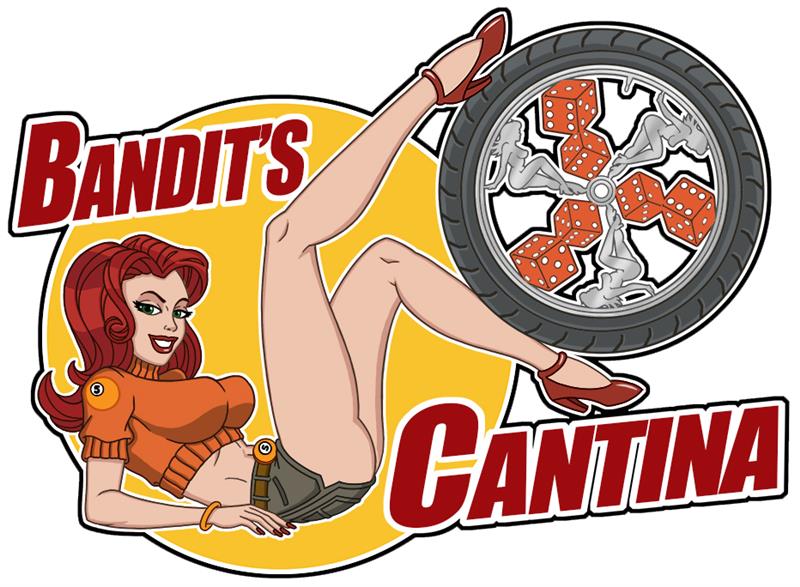
Motorcycle Vibrations Can Damage iPhone cameras as per Apple
By Wayfarer |
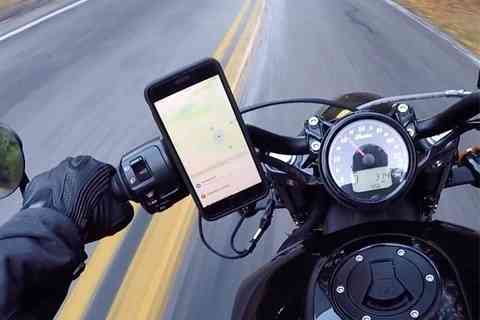
by Kim Lyons from https://www.theverge.com
by Edward Moyer from https://www.cnet.com
From Apple: https://support.apple.com/en-us/HT212803
Motorcycle vibrations can degrade iPhone camera performance, Apple says
High amplitude vibrations can cause problems for the cameras’ gyroscopes
A new post on Apple’s Support forum https://support.apple.com/en-us/HT212803 says exposing iPhones to high-amplitude vibrations, “specifically those generated by high-power motorcycle engines” could degrade the devices’ camera system. The company recommends against mounting an iPhone on a motorcycle, as the vibrations may be transmitted via the bike’s handlebars and chassis.
Here’s the technical explanation from Apple:
If you accidentally move a camera when you take a picture, the resulting image can be blurry. To prevent this, some iPhone models have optical image stabilization (OIS).1 OIS lets you take sharp photos even if you accidentally move the camera. With OIS, a gyroscope senses that the camera moved. To reduce image motion, and the resulting blur, the lens moves according to the angle of the gyroscope.
Additionally, some iPhone models have closed-loop autofocus (AF).2 Closed-loop AF resists the effects of gravity and vibration to preserve sharp focus in stills, videos, and panoramas. With closed-loop AF, on-board magnetic sensors measure gravity and vibration effects and determine the lens position so that the compensating motion can be set accurately.
The OIS and closed-loop AF systems in iPhone are designed for durability. However, as is the case with many consumer electronics that include systems like OIS, long-term direct exposure to high-amplitude vibrations within certain frequency ranges may degrade the performance of these systems and lead to reduced image quality for photos and videos. It is recommended to avoid exposing your iPhone to extended high-amplitude vibrations.
The iPhone 6s, iPhone 6s Plus, and all iPhones since the iPhone 7 have both optical image stabilization and closed-loop autofocus (as noted by MacRumors, the first outlet to spot the Apple support post). Both features are also vulnerable to magnetic interference from some iPhone accessories, Apple warned earlier this year, but removing the accessories should take care of that issue.
Additionally in the new post, Apple says if you’re planning to mount your iPhone to a scooter or a moped, it recommends using a vibration-dampening mount to lessen the risk to the phone and its camera system. And avoiding prolonged regular use of an iPhone mounted to a vehicle that produces lower-amplitude vibrations is also a good idea.
Apple says iPhone cameras can be hurt by motorcycle vibrations
High-power or high-volume motorcycle engines produce potentially damaging high-amplitude vibrations, so the company says don’t attach your phone to your hawg.
If you’ve been rockin’ down the highway with an iPhone mounted on your motorcycle, you might want to think again. On Friday, Apple said certain motorcycle engines can give your iPhone’s camera bad vibes.
“Exposing your iPhone to high amplitude vibrations within certain frequency ranges, specifically those generated by high-power motorcycle engines, can degrade the performance of the camera system,” the company said in a post on its support site.
The vibes are channeled through the chassis and handlebars, so you shouldn’t attach your phone to motorcycles with high-power or high-volume engines, the company said. It said mopeds and scooters, which tend to have small-volume or electric engines, are less of a concern but that you should use a vibration dampening mount and “avoid regular use for prolonged periods.”
The problem has to do with high-tech gyroscope- and magnet-based camera systems designed to compensate for shaky shots. Such systems, like optical image stabilization and closed-loop autofocus, make automatic adjustments if you accidentally move while taking a picture.
“The OIS and closed-loop AF systems in iPhone are designed for durability,” Apple said. But “long-term direct exposure to high-amplitude vibrations … may degrade the performance of these systems and lead to reduced image quality for photos and videos.”
For details on which iPhone models feature these camera systems, you can check out Apple’s post.
https://support.apple.com/en-us/HT212803
Cool Choppers by South Side MC member Patrick
By Wayfarer |
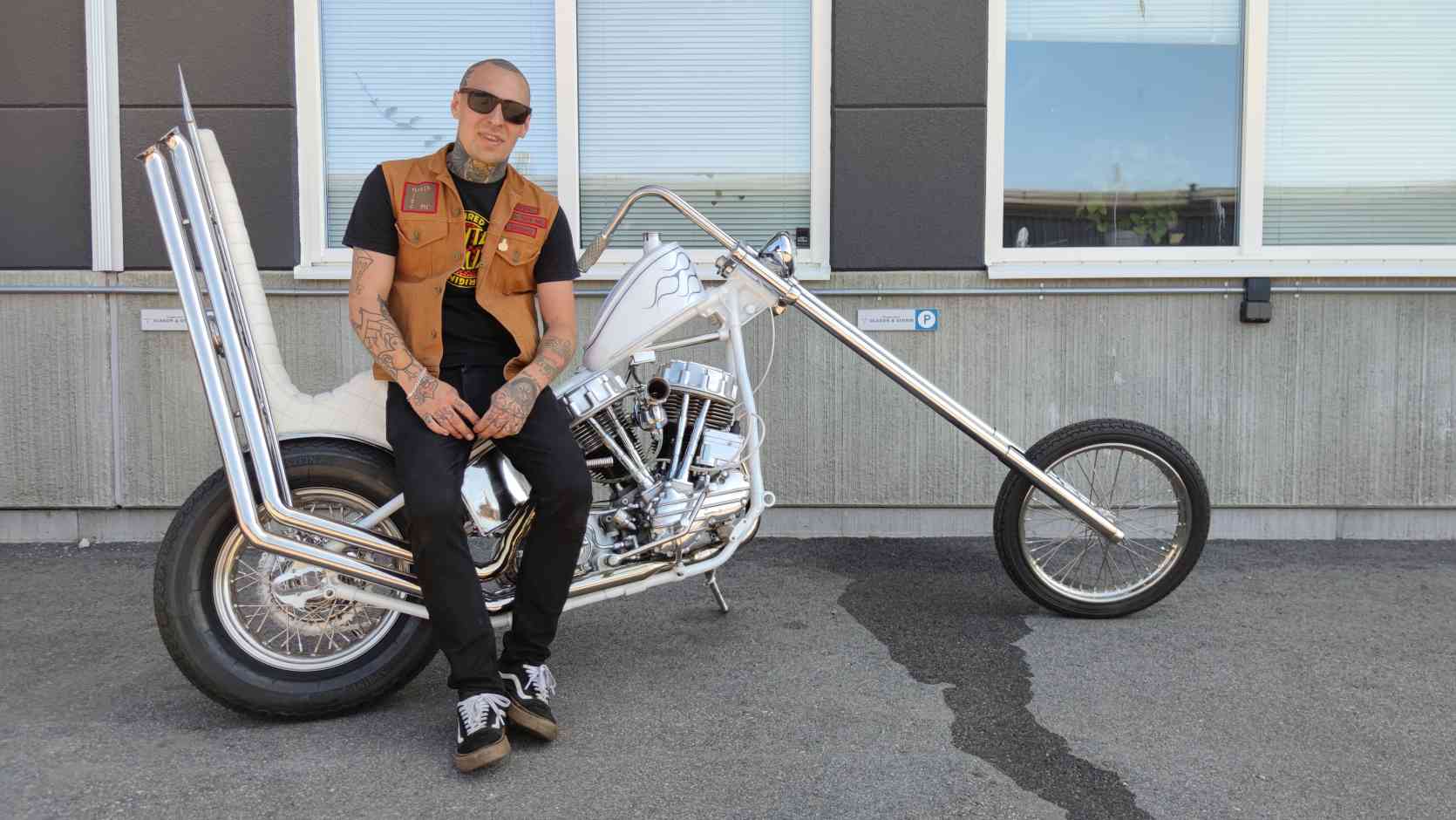
A follow-up to our article on Long Fork Run. Southside MC Est 88 Sweden member Patrick’s cool choppers are featured here.
Patrick: “When I built Suicide Machine, I was introduced to stainless which has become a material that I prefer to build my parts as much as possible. So on the white chopper I have made oil tank, flatfender, tripple Trees, barney legs, sissybar, controls, exhaust and lots of smaller details in stainless steel.”
Click Here to See this Photo Feature Article only on Bikernet.com
Get Featured on Bikernet.com – Send Bandit Your Custom Builds
Join the Cantina for more – Subscribe Today.
https://www.bikernet.com/pages/custom/subscription.aspx
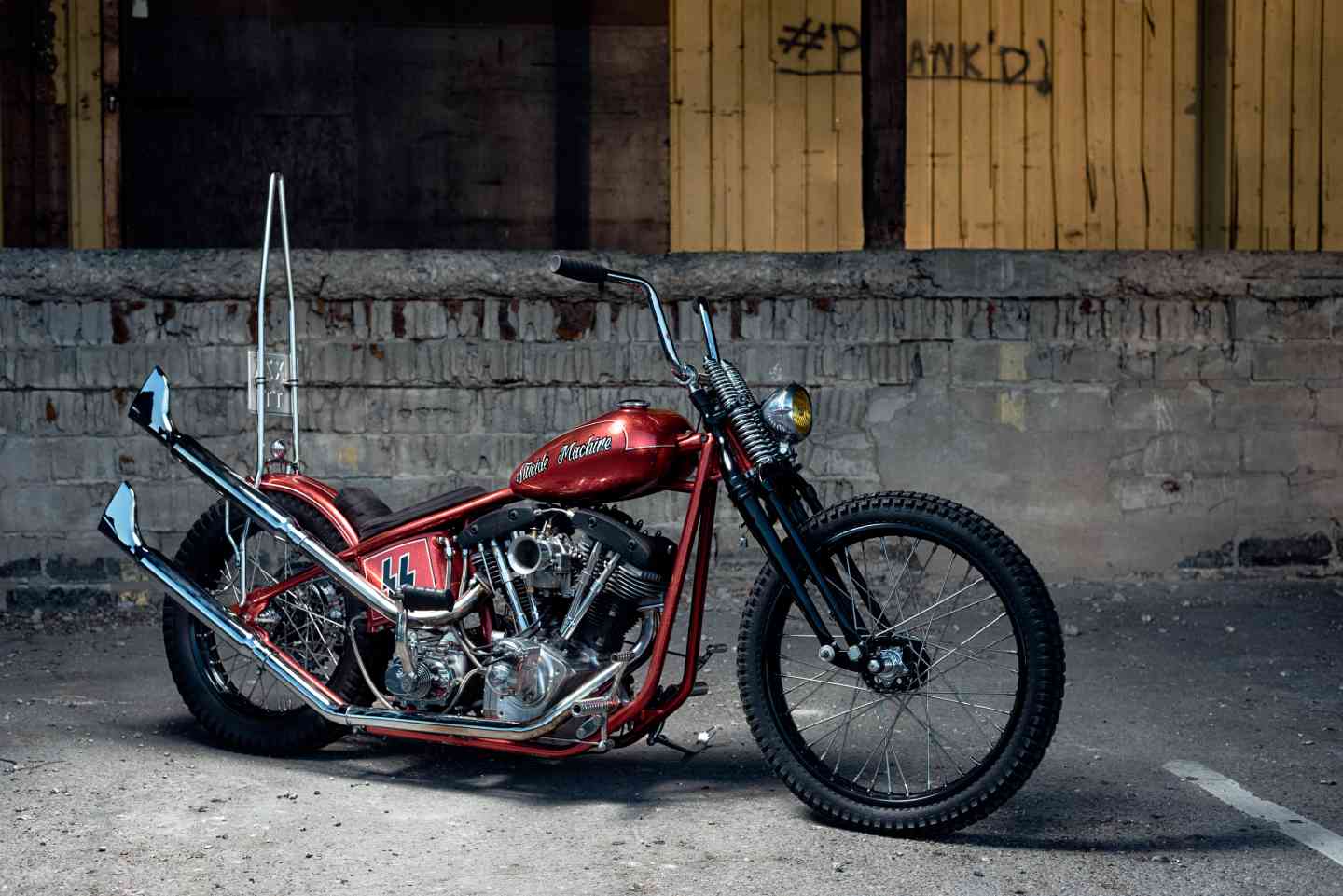
Over 8500 Motorcycles Ride in Support of Marine Cpl Humberto “Bert” Sanchez
By Wayfarer |
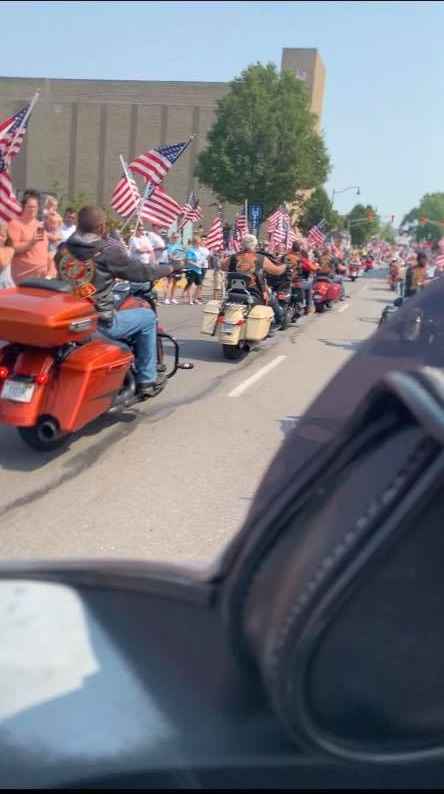
by Rogue and John Lee
What an honor it was to be part of the procession for Marine Cpl Humberto “Bert” Sanchez. Over. 8500 bikes came in from multiple other states to show their support. That alone was something amazing to see. There were so many bikes that there was no good way to even get a photo to show the amount of bikes that were there.
The Marine Riders were towards the front of the procession and when we pulled out to follow the behind Cpl Sanchez there were people lining the streets. From the gates of Grissom Airforce base all the way to Logansport. A good 20 miles of people on the side of the road.
Everyone had American Flags waving. Lots of Marine Corps flags too. Multiple ladder trucks with flags draped over the road. Old men in their uniforms from when they served saluting the entire procession. Children holding their parents hands. Family pets. People crying and holding their hands over their hearts. People playing Patriotic music.
And that’s before we even got to Logansport.
Cpl Sanchez received an aerial escort from 4 A10 Warthogs as we neared. They flew over us multiple times before circling the front end of the procession. They would come buzzing in a couple hundred feet off the ground.
Then as we come into Logansport it’s just a sea of people lining the street. Tens of Thousands of people lined the city streets for Cpl Sanchez’s final few miles. I would guess anywhere from 10,000-20,000 people were lined up along the roads from Peru to Logansport.
Absolutely amazing. Well done Indiana! That’s was an amazing homecoming for a hero.
I am honored to have been a part of this and happy I got to ride next to my Marine Rider Brothers. Please keep the Sanchez family in your thoughts and prayers as they prepare to bury their hero in a couple of days.

